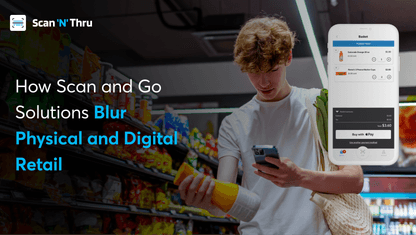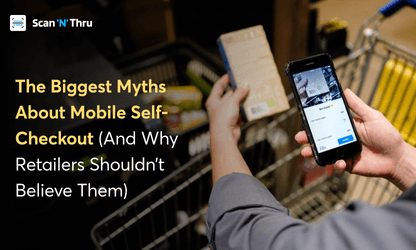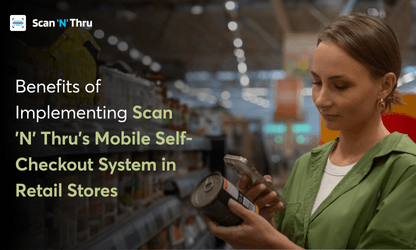The way customers checkout is no longer just a routine step in shopping—it’s becoming the ultimate test of a retailer’s ability to meet modern expectations.
Speed, convenience, and personalization were once considered luxuries, but now they’re the baseline. And the brands that fail to deliver risk losing customers to those who can.
Consumer expectations are higher than ever and it keeps on evolving. The only way to stay relevant for business owners is to always be prepared to adapt to changes.
Technological innovations have provided a host of new solutions to create a frictionless shopping experience in physical stores. It’s vital for retailers like you to know and identify the retail checkout trends so that you can understand how they can impact your business.
The aim of this blog is to make you aware of seven retail checkout trends that are revolutionizing the in-store shopping experience.
Let’s dive in.
Retail apps for checkout and beyond
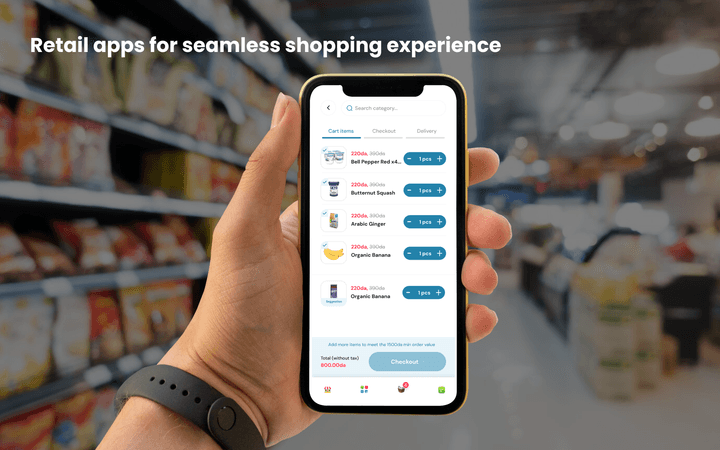
For consumers, retail apps started as a shopping companion, but now they are not just limited to that; they’ve become a vital bridge between convenience and customer loyalty.
Getting a custom app can be seen as a one-time investment with long-term benefits for retail businesses like yours.
Besides, these days apps go far beyond the basic functionalities; they’re now central to providing frictionless shopping experiences that extend from product discovery to payment. Features like personalized offers, integrated loyalty rewards, and one-click checkouts empower retailers like you to minimize friction.
A 2024 article from Emarketer revealed that getting the best prices, loyalty rewards, and convenient checkout are among the top reasons that shoppers use retail apps.
How are retail apps impacting in-store shopping experience
What’s most exciting is the shift toward custom retail apps becoming full-fledged checkout tools. This means customers can now complete their shopping journey entirely on their smartphones. No checkout counters or cash registers are required. It also means no queues inside your store as well.
Contactless & closed-loop payments
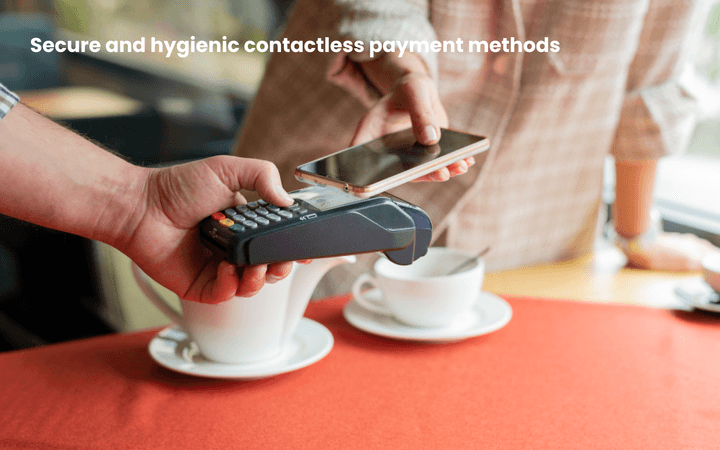
Most people prefer contactless payments nowadays. And numbers prove it. IntelliPay predicts that mobile and contactless payments will grow by 12.4% each year starting from 2025 to 2034.
Shoppers value the ease of simply tapping their card or smartphone at checkout, however, many retailers may not realize the benefits of combining them with closed-loop payment systems.
These systems, designed for use within specific brands or stores only, deliver unmatched insights into customer habits, which makes it so easy to build loyalty and retain customers.
How contactless & closed-loop payments impact in-store customer experience
The type of payment methods should not be judged solely for transaction speed; there are other important aspects as well such as security and convenience.
Contactless and closed-loop payments maintain a fine balance for all of that. They usually have faster processing times than bank cards and most customers find them more convenient as well as compared to other payment methods.
NordLayer described 2024 as “one of the worst years yet on the cybersecurity front.” Hence security is a legitimate concern for all shoppers in a world where data breaches make headlines.
Encrypted transactions and tokenization ensure that contactless methods are secure. Again it’s a win for both convenience and peace of mind. For retailers like you, adopting these systems means building trust while creating opportunities for engagement and retention.
Cashierless stores
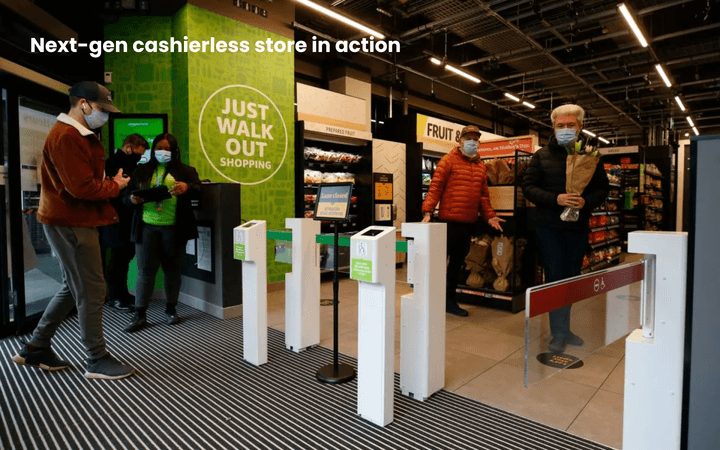
The concept of cashierless stores—where shoppers walk in, grab their items, and leave without ever stopping at a checkout counter—may feel too fancy and futuristic. Yet, commercial giants like Amazon have proven it’s possible with its Amazon Go stores.
Cashierless stores leverage a mix of AI, IoT, and computer vision technologies. These stores offer unparalleled convenience. They eliminate the most significant customer pain point: waiting in line.
However, the reality isn’t all smooth sailing. The setup costs for cashierless checkout stores are enormous. So that means they are basically out of reach for small businesses.
Another thing about these stores is that privacy concerns surrounding data collection and surveillance could deter both shoppers and retailers. No doubt, this model is promising for large-scale businesses, but for small retailers like you, it’s better to opt for cost-effective alternative solutions—like mobile self-checkout.
Read more: The Role of Mobile Self-Checkout in Creating a Cashierless Store Experience
Mobile self-checkout technology
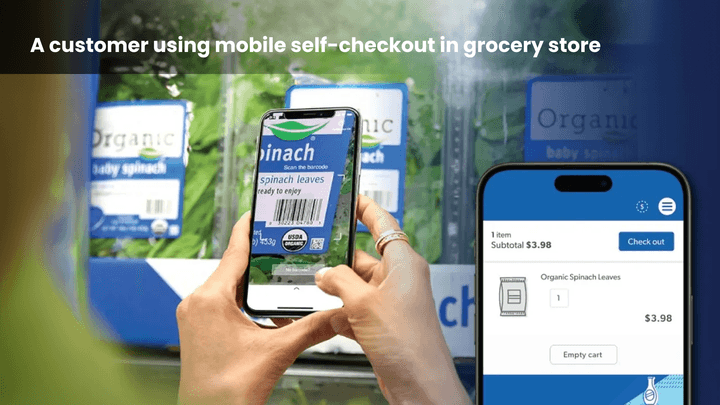
Mobile self-checkout is the future that most retailers like you can afford today. This technology allows your customers to scan items and pay directly via their smartphones from anywhere within your store. It’s a solution that prioritizes efficiency. It gives your customers control while taking off much of the load from your store staff.
A recent report from PYMNTS revealed that the majority of consumers (84%) prefer self-service checkouts with Gen Z and Millennials as the most common users. Stats like that are a clear sign that people don’t just get used to newer technologies; they also start preferring them for their ease and speed.
Although, there’s one catch when we say self-service checkout. It could include multiple other technologies along with mobile self-checkout like self-checkout kiosks, smart carts, and cashierless stores. Now all these come with their own complexities and challenges.
What makes mobile self-checkout stand out is its flexibility and affordability. All other self-checkout alternatives are costlier and they all need a dedicated store space.
Besides, mobile self-checkout works seamlessly across a range of retail formats—from small boutiques to large grocery stores.
For retailers like you, the benefits go beyond faster checkouts. It reduces dependency on physical registers, lowers operational costs, and allows for better allocation of staff resources—all of that without breaking the bank.
Hybrid shopping
The modern shopper doesn’t distinguish between online and offline anymore. Consumers may start their shopping journey in-store, browsing different products, and then end up completing purchases online. Or it could be that they start browsing online and then pop up in the store to buy. They want the best of both worlds.
Hybrid shopping models like buy-online-pickup-in-store (BOPIS) and curbside pickups have transformed customer expectations, especially post-pandemic. Emarketer predicts that click-and-collect mode will account for 20% of online shopping by 2027.
These trends not only add convenience but also create new challenges and opportunities for in-store checkouts.
When shoppers come into your store for pickups, it’s another chance for you to re-engage them. This is the time to provide your customers with the experience that they can’t have online.
The result of that will be a shopping journey that feels seamless, connected, and rewarding.
Smart carts
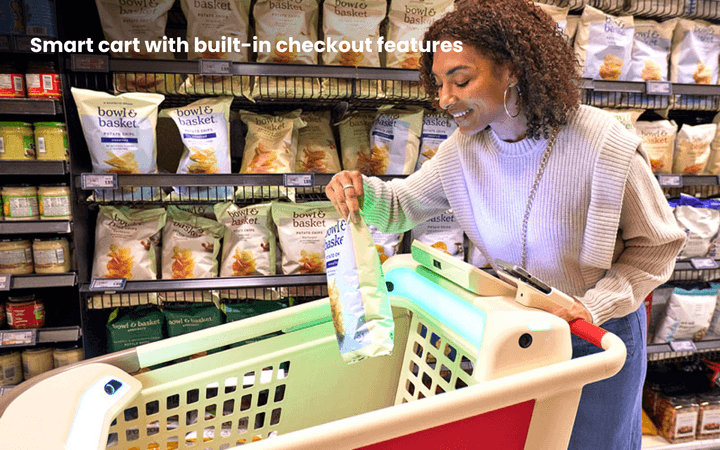
Smart carts are redefining the way people shop in brick-and-mortar stores, especially in large chains and supermarkets. These carts are equipped with built-in screens, sensors, and payment modules. That means stores having these carts won’t need traditional checkout lanes or counters.
Customers simply pick the products they need, scan them, and pay directly through the machine on the cart. This simplifies the in-store customer experience and removes the hassle of waiting in line to checkout.
Smart carts do more than simplify checkout—they engage shoppers in new ways. The integrated screens can offer product recommendations, display real-time price updates, or even guide customers through the store.
However, their application remains limited. They are best suited for large retailers with the budget to invest in this technology. Smart carts do not seem like a universal solution, still, they hint at what the future of in-store shopping could look like.
Generative AI and personalization in checkout
Let’s address the elephant in the room…Generative AI is no longer just a buzzword—it has found its application in almost all industries. Retail hasn’t remained immune; many retailers are finding ways to use AI to personalize and streamline the checkout process.
By analyzing purchase behavior and patterns, generative AI can create hyper-personalized experiences like tailored discounts, dynamic pricing, combo deals, etc.
Beyond personalization, AI-powered chatbots and virtual assistants are also making checkouts smoother. They can guide customers through their payment journey, answer questions in real-time, or suggest complementary products.
Generative AI offers limitless possibilities for retailers like you who are looking to upsell or cross-sell effectively.
What these trends mean for retailers
Retail businesses like yours must adapt to an ever-evolving landscape where convenience, speed, and personalization are non-negotiable.
Frictionless checkout technologies offer a way to meet these demands while driving profitability. It may seem like most of these technologies are more suitable for large retailers or multi-chain retailers. For small retailers, however, a scalable and cost-effective option like mobile self-checkout is a smart and practical way forward.
When it comes to mobile self-checkout technology, a solution like Scan ‘N’ Thru can help you level up the checkout process in your retail store. With benefits such as no checkout lines, seamless in-app payments, and digital receipts, it’s a perfect solution for delivering a frictionless in-store shopping experience.
Ultimately, the key lies in balancing your customer needs with operational feasibility. Investing in the right technologies and as per your business needs can lead to long-term gains—not just in revenue but also in customer loyalty and satisfaction.


